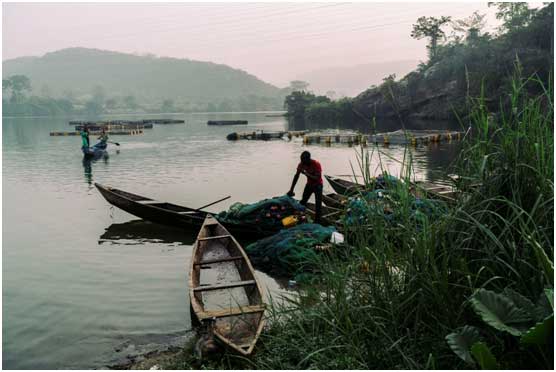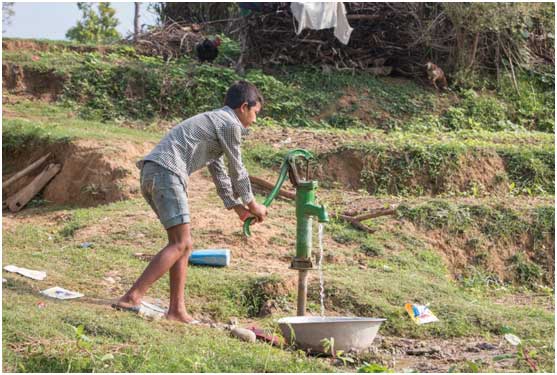We Can’t Halt Extinctions Unless We Protect Water

COLOMBO, Sri Lanka, May 31 (IPS) - Claudia Sadoff is Director General, International Water Management Institute (IWMI)
Global biodiversity loss has reached critical levels. One million species of plants and animals are now estimated to be at risk of extinction. The window for action is closing, and the world needs to urgently take note.
Countries would do well to consider this: our ability to preserve species hinges to a great extent on the actions we take to protect freshwater ecosystems. Safeguarding water for the environment is critical for biodiversity and for people.
Freshwater ecosystems are major biodiversity hotspots. We derive much value from them, even though we may not realise it. Wetlands purify drinking water; fish is one of the most traded food commodities on the planet; and floodplains can provide vital buffers that lessen the impacts of flooding.
The people who depend most on the services provided by aquatic ecosystems are generally the poorest and most marginalized in developing countries and consequently those hardest hit by biodiversity loss.
However, all of us, both rich and poor, depend on healthy ecosystems, so degradation of ecosystems and loss of biodiversity pose an enormous threat for everyone.
About 35 per cent of the world's biodiversity-rich wetlands, for example, have been lost or seriously degraded since 1970. The annual value of the benefits these wetlands (freshwater and coastal) provide is estimated at a staggering USD 36.2 trillion; nearly double the benefits derived from all the world's forests.
Sustainable management of aquatic ecosystems (and of water resources in general) must aim to ensure that ecosystems continue providing these services.
A key approach for reversing this trend centres on ensuring that water continues to flow in a way that will sustain aquatic ecosystems, thereby supporting populations, economies, sustainable livelihoods, and well-being.

This means maintaining the right quality, quantity and timing of water flows – which scientists call "environmental flows", or "E-flows" for short.
Managing tradeoffs
Water, through contributions to economic growth, environmental health and human well-being, plays a critical role in many of our broader sustainable development goals. It will therefore be necessary to consider some inevitable tradeoffs when planning for the sustainable management of water.
Take the expansion of irrigation for more intensive crop production, for example, which is essential for ending hunger. The alternative to increasing irrigation would be massive encroachment of agriculture on forests and other fragile ecosystems, thus undermining the protection of biodiversity.
At the same time, increased irrigation will, by removing water from rivers and aquifers, inevitably have some negative impacts on aquatic ecosystems.
The challenge is to maximize synergies and minimize tradeoffs, and to do so in ways that are transparent and equitable, based on scientific evidence. Undertaking detailed assessments of E-flows helps make the tradeoffs explicit.
The information derived from E-flow assessments can contribute to important discussions between different sectors and actors, helping to determine which outcomes are acceptable to society and likely to be sustainable.
E-flows assessment in action
For more than a decade, the International Water Management Institute (IWMI) has been devising and steadily improving methods for E-flow assessment. In a 2007 project, IWMI partnered with World Wide Fund for Nature-India (WWF-India) to carry out the country's first-ever holistic environmental flow assessment, focused on the iconic Ganges River.
The Indian government subsequently incorporated the concept of E-flows into the aims and objectives of the National Mission for Clean Ganga, the implementation arm of the National Ganga River Basin Authority.
Working with partners, IWMI researchers have now developed E-flow calculators, a family of software formaking rapid, assessments anywhere in the world from a computer.
More recently, IWMI researchers have further adapted their E-flow calculator for specific river basins, such as those in western Nepal. As a result of those developments, E-flow assessment is now poised for wider application in diverse settings.
In support of national efforts to better manage tradeoffs in water management, information provided by E-flow calculators can also contribute to tracking "water stress".
For instance, how much freshwater economic activities withdraw compared to the total renewable supply, and how much water should be left in rivers to maintain basic ecological functions and ecosystem services.
Too much of our biodiversity depends on water for us to overlook sustainable water management as a key part of the solution to species extinction. The time has come for a more concerted effort to stem the loss of aquatic ecosystems and of the myriad species that inhabit them.
© Inter Press Service (2019) — All Rights Reserved. Original source: Inter Press Service
 Global Issues
Global Issues